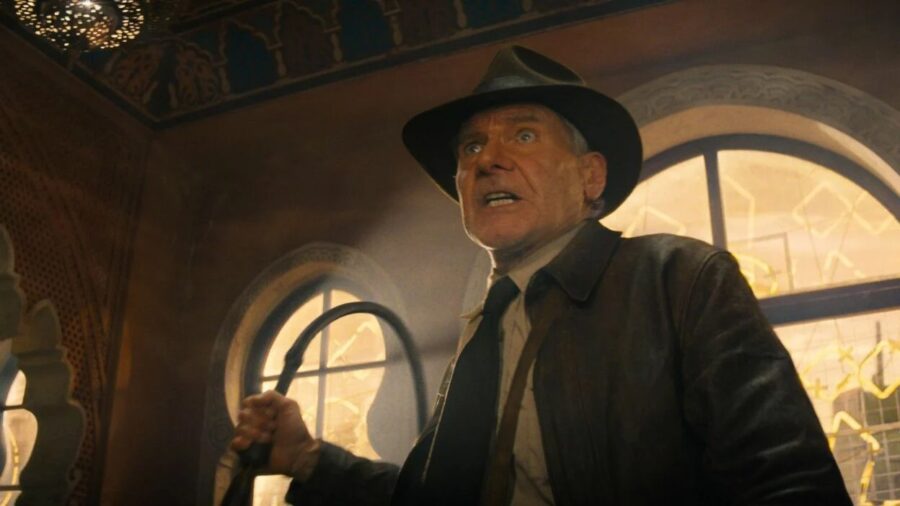Movie Budgets Are Out Of Control And It’s Destroying Hollywood

Hollywood studios are facing a disaster of their own making this year, facing declining box office returns, but it’s not audience apathy in the latest films about family, remakes, and sequels that are proving to be destructive. The biggest problem is rapidly ballooning movie budgets that require a film to earn over $750 million before it turns a profit.
Movie budgets are astronomically high and it’s resulted in every blockbuster to be branded as a failure, financially and creatively.
Studios are usually secretive about production budgets, but even the numbers that are shared are eye-popping; for example, Indiana Jones and the Dial of Destiny had a budget of $300 million (all budgets via BoxOfficeMojo). That’s enough for #11 all-time, but it’s not even the highest of the year.
Fast X was made with a budget of $340 million, making it more expensive than Avengers: Infinity War and Justice League. That means, in order to turn a profit, Vin Diesel‘s latest would need to earn $680 million, which it did, with a worldwide gross of $720 million. Yet the film still managed to lose money for Universal.
Movie budgets hitting all-time highs are only one part of the problem since they don’t include whatever was spent on marketing. Every television ad, every billboard, and every restaurant promotion costs money. For blockbusters, the marketing budget can match production; using the example of Dial of Destiny, the marketing was an additional $100 to $200 million.

Sometimes, more money is spent on marketing instead of production, for example, Get Out cost only $4.5 million to make, but a $70 million marketing blitz supported it. Jordan Peele’s debut made $255 million worldwide, a nearly perfect example of why low-budget horror, and not major CGI blockbusters, is where studios can make the most money.
M3GAN and Scream VI made a quarter of the money that Ant-Man and The Wasp Quantumania earned, but because the horror films were made on the cheap, they are considered a success, while the third Ant-Man film was a failure with $476 million. The difference is with the production budget; the studios have no one to blame but themselves.
Horror films have historically made studios the most profit, thanks to low budgets and creative storytelling.
The lowest, least technically demanding wide-release movie budget will still cost millions of dollars; let’s take Insidious as an example. The first film, in 2011, cost $1.5 million to make, Chapter 2 had a budget of $5 million, while Chapter 3 and The Last Key topped out at $10 million.
Every film in the franchise has made back at least 10 times what it costs to produce, with the last two films earning more profit than the last five DC movies.
Ballooning movie budgets are nothing new for Hollywood, as at one point, Kevin Costner‘s Waterworld was the most expensive movie in history with a budget of $175 million, and it also barely managed a profit. At the time, it was an outlier, whereas today, multiple films in theaters right now have budgets over $200 million, including The Little Mermaid, Elemental, Dial of Destiny, and The Flash.

Throwing more money at a film doesn’t make it a better movie, with all of those currently underperforming, and two may be the biggest money-losers in Hollywood history. If we had fewer special-effect sequences and more dialogue that sounds like humans wrote it, maybe the films could have been made for significantly less money, and maybe, they would have performed better.
Hollywood has lived by the mantra that “bigger is better” since Johnny Depp shattered box office records as Captain Jack Sparrow, but that was twenty years ago, and today, the world is different. Movie-goers have to be picky about what they see, with tickets costing upwards of $25 for an evening show, forcing movie budgets and expectations to adjust accordingly.
Lower Budgets Would Have Saved 2023’s Box Office

If The Little Mermaid, a remake no one wanted, cost even $50 million less to make, Disney would be cruising to profitability right now instead of hoping it can leg out a few more weeks. Fast X made $700 million worldwide, but with the $340 million budget and the expensive marketing campaign, it’s still short of turning a profit.
In addition, limitations breed creativity, which is why Evil Dead is a classic, the original Star Wars trilogy is better than the Disney films, and why the latest blockbusters seem to be the same movie we’ve seen hundreds of times. Scaling back production budgets and cutting back the inane marketing, which most people tune out anyways, is the easiest way for Hollywood to start making money again.
And hopefully, in doing so, they make movies people want to see.












